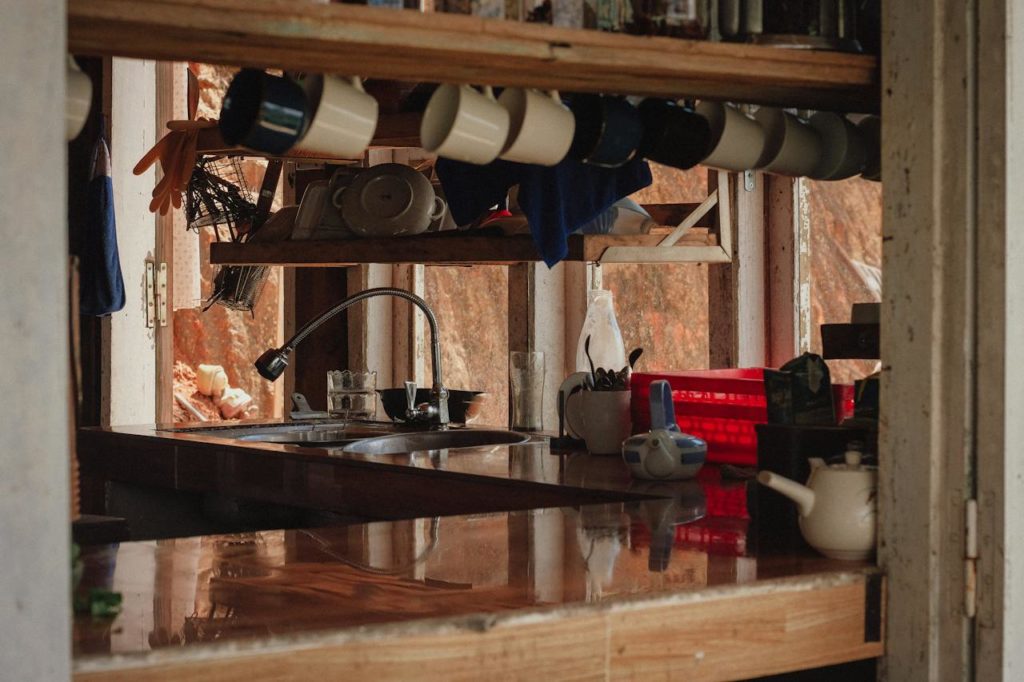Creating an outdoor kitchen can be an exciting venture, offering a space to entertain guests and enjoy the great outdoors. One essential component of any outdoor kitchen is a sink, providing convenience and functionality. However, the thought of installing a sink might seem daunting, leading to unnecessary stress. This guide will walk you through the steps to make installing a sink for your outdoor kitchen a seamless and stress-free experience.
Thorough planning and design
Embarking on the installation of an outdoor kitchen sink necessitates thorough planning and design. Take time to assess the layout, utility connections, and overall aesthetic of your outdoor space. A meticulously thought-out plan will serve as a roadmap, guiding the precise placement of your sink and contributing to a streamlined installation process. Consider the workflow in your kitchen area, ensuring that the sink is strategically placed for easy access during food preparation, cooking, and cleaning.
Careful sink selection
The selection of your high-quality outdoor kitchen sink is a critical decision in ensuring a successful installation. Opt for durable materials such as stainless steel or cast iron that can withstand the challenges of outdoor exposure. Consider the size, basin configuration, and faucet options, ensuring they align seamlessly with your kitchen’s design. A thoughtfully chosen sink not only enhances functionality but also adds an aesthetic touch to your outdoor culinary space.
Gathering essential tools and materials
To embark on a stress-free installation, it is essential to gather the right tools and materials. Arm yourself with a drill, adjustable wrench, screwdriver, and any necessary plumbing materials. Preparedness at this stage ensures a smoother process, reducing potential challenges during installation and fostering an efficient workflow. Additionally, invest in high-quality materials to guarantee the longevity and durability of your outdoor kitchen sink, mitigating the need for frequent repairs or replacements.
Verifying local regulations
Before commencing with the installation, it is imperative to verify and comply with local regulations and building codes. Different regions may have specific requirements for outdoor plumbing, and adhering to these regulations ensures not only a smooth installation process but also a safe and compliant outdoor kitchen. Consult with local authorities or hire a professional to ensure that your outdoor kitchen meets all the necessary standards, providing peace of mind and avoiding potential legal complications in the future.
Site preparation
Proper site preparation is foundational to a successful sink installation in your outdoor kitchen. Clear the designated area, ensuring it is free from debris, and level the surface for stability. Whether integrating the sink into an existing countertop or creating a new one, meticulous site preparation is instrumental in achieving a secure and durable installation. Additionally, consider the surrounding environment, and take measures to protect your outdoor kitchen from the elements, enhancing its resilience over time.
Water supply connection
Establishing a reliable water supply connection is a pivotal step in the sink installation process. Position your outdoor kitchen in proximity to existing water lines for convenience. Enlist the services of professional plumbers to ensure precise and secure connections. Additionally, incorporating shut-off valves provides ease of maintenance and enhances the overall functionality of your outdoor kitchen. Explore the possibility of integrating a water filtration system to ensure clean and safe water for all your culinary needs.
Implementation of a robust drainage system
A robust drainage system is paramount for the functionality of your outdoor sink. Create a well-structured slope in the drainpipe to facilitate efficient water flow and prevent the accumulation of standing water. Installing a P-trap is essential to mitigate unpleasant odors, and regular checks for potential clogs will maintain optimal drainage, ensuring a trouble-free outdoor kitchen experience. Consider using eco-friendly drainage solutions, such as permeable pavers or gravel, to enhance water absorption and minimize runoff, contributing to a sustainable outdoor kitchen environment.
Secure sink installation
Ensuring a secure sink installation is fundamental to the longevity and functionality of your outdoor kitchen. Follow manufacturer guidelines meticulously, using the appropriate hardware to anchor the sink to the countertop or cabinet. Confirm stability and address any discrepancies promptly. A secure installation not only enhances performance but also minimizes the risk of damage, ensuring your outdoor kitchen stands the test of time.
Sealing and weatherproofing
Given the outdoor exposure, effective sealing and weatherproofing are essential to protect your sink and surrounding materials. Apply a high-quality sealant around the sink’s edges to prevent water damage and deterioration over time. Consider weather-resistant materials for your outdoor kitchen components to withstand varying climatic conditions, promoting durability and preserving the aesthetic appeal of your outdoor culinary space.
Conclusion
Embarking on the installation of an outdoor kitchen sink demands meticulous planning, careful selection, adherence to regulations, thorough site preparation, and attention to secure installation and weatherproofing. Through comprehensive water supply connections, a robust drainage system, and rigorous testing, you can create a stress-free outdoor kitchen oasis that seamlessly combines practicality and aesthetic appeal, providing enduring enjoyment for you and your guests.


